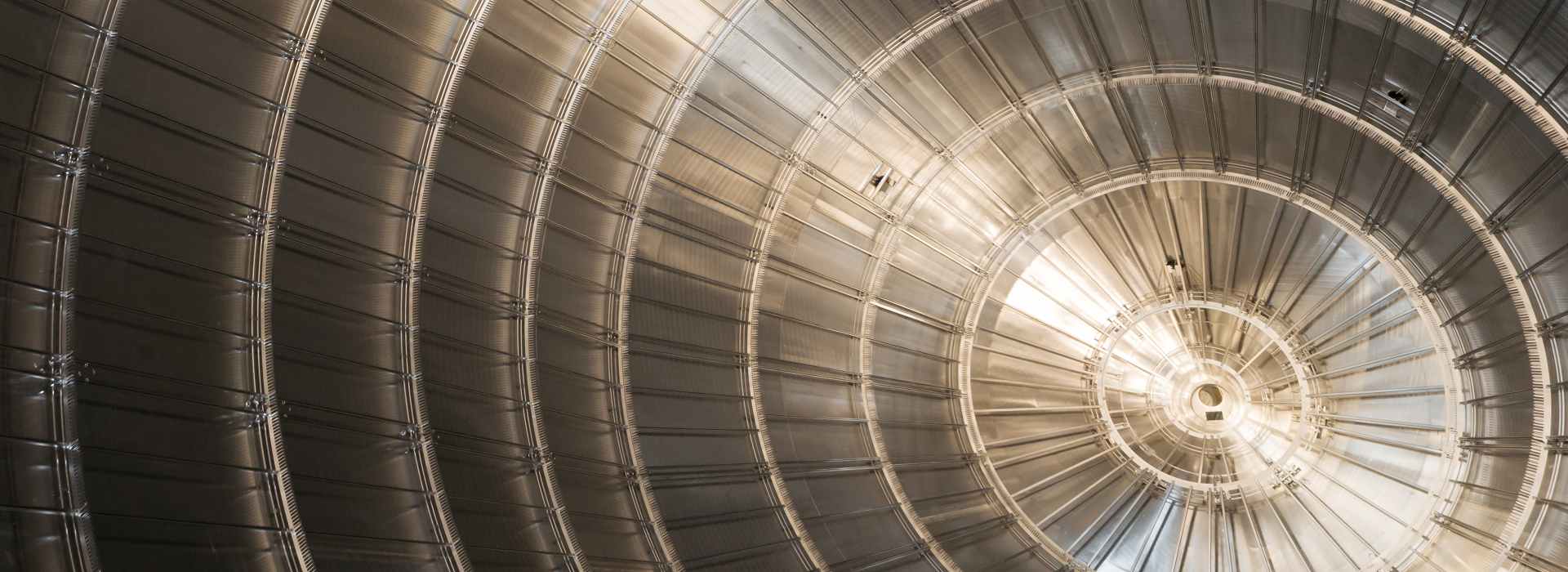 The KArlsruhe TRItium Neutrino (KATRIN) experiment, which is presently being performed at Tritium Laboratory Karlsruhe on the KIT Campus North site, will investigate the most important open issue in neutrino physics:
The KArlsruhe TRItium Neutrino (KATRIN) experiment, which is presently being performed at Tritium Laboratory Karlsruhe on the KIT Campus North site, will investigate the most important open issue in neutrino physics:
What is the absolute mass scale of neutrinos?
Neutrinos probably are the most fascinating species of elementary particles. The "ghost particle of the Universe" is a key to open issues in science on many scales, linking the microcosm of elementary particles to the largest structures in the Universe.
Neutrinos are the lightest particles in the Universe. Their tiny mass is a clear indication for physics beyond the standard model of elementary particle physics. On the largest scales, neutrinos act as "cosmic architects" and take part in shaping the visible structures in the Universe, as they influence the formation and the distribution of galaxies.
Predecessor experiments at Mainz and Troitsk were able to appoint an upper limit to the electron anti-neutrino mass of 2.3 eV/c2. KATRIN, using the same measurement technique, will either improve this limit to better than 0.3 eV/c2 (90% CL) or discover the actual mass, if it is larger than 0.35 eV/c2. This requires an improvement by two orders of magnitude with respect to key experimental parameters.
The international KATRIN Collaboration unites world-wide expertise in tritium-β-decay in a key experiment in the research field of astroparticle physics and consists of more than 150 scientists, engineers, technicians and students from 12 institutions in Germany, the United Kingdom, the Czech Republic and the United States.
